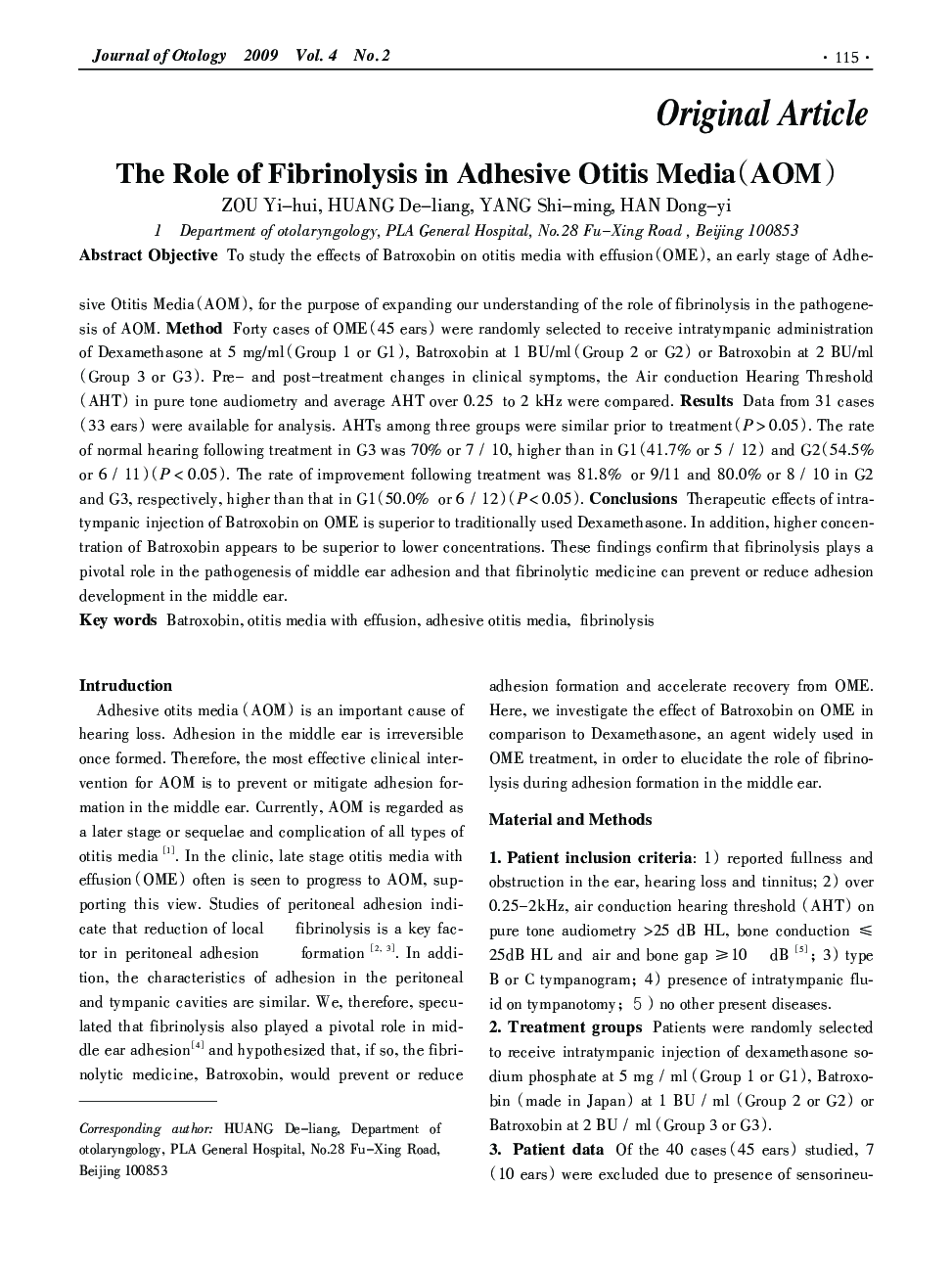| کد مقاله | کد نشریه | سال انتشار | مقاله انگلیسی | نسخه تمام متن |
|---|---|---|---|---|
| 4116775 | 1270276 | 2009 | 4 صفحه PDF | دانلود رایگان |

ObjectiveTo study the effects of Batroxobin on otitis media with effusion (OME), an early stage of Adhesive Otitis Media (AOM), for the purpose of expanding our understanding of the role of fibrinolysis in the pathogenesis of AOM.MethodForty cases of OME (45 ears) were randomly selected to receive intratympanic administration of Dexamethasone at 5 mg/ml (Group 1 or G1), Batroxobin at 1 BU/ml (Group 2 or G2) or Batroxobin at 2 BU/ml (Group 3 or G3). Pre– and post–treatment changes in clinical symptoms, the Air conduction Hearing Threshold (AHT) in pure tone audiometry and average AHT over 0.25 to 2 kHz were compared.ResultsData from 31 cases (33 ears) were available for analysis. AHTs among three groups were similar prior to treatment (P > 0.05). The rate of normal hearing following treatment in G3 was 70% or 7/10, higher than in G1 (41.7% or 5/12) and G2(54.5% or 6/11) (P < 0.05). The rate of improvement following treatment was 81.8% or 9/11 and 80.0% or 8/10 in G2 and G3, respectively, higher than that in G1 (50.0% or 6/12) (P < 0.05).ConclusionsTherapeutic effects of intratympanic injection of Batroxobin on OME is superior to traditionally used Dexamethasone. In addition, higher concentration of Batroxobin appears to be superior to lower concentrations. These findings confirm that fibrinolysis plays a pivotal role in the pathogenesis of middle ear adhesion and that fibrinolytic medicine can prevent or reduce adhesion development in the middle ear.
Journal: Journal of Otology - Volume 4, Issue 2, December 2009, Pages 115–118